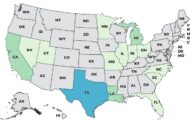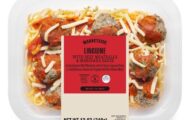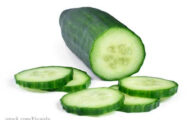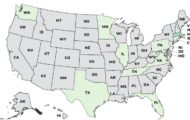According to a study published in Food Microbiology, raw milk aged cheeses are relatively safe. The cheeses must be aged at least 60 days, at temperatures not less than 35 degrees F. The aging process produces low pH, low water activity, and high salt content that renders the cheese inhospitable to bacteria, yeast, and molds.
 The regulations regarding raw milk aged cheeses were enacted in 1950, “long before contemporary pathogens such as Listeria monocytogenes, E. coli 0157:H7, and Campylobacter had been recognized,” according to the study. Those bacteria can tolerate inhospitable environments such as low pH and low water activity.
The regulations regarding raw milk aged cheeses were enacted in 1950, “long before contemporary pathogens such as Listeria monocytogenes, E. coli 0157:H7, and Campylobacter had been recognized,” according to the study. Those bacteria can tolerate inhospitable environments such as low pH and low water activity.
In the last 20 years, “many small and several large foodborne outbreaks linked to consumption of cheese made from unpasteurized milk have occurred, both in Europe and in the U.S.” according to the study.
So the FDA is reviewing the raw milk aged cheese regulations and may extend the 60-day aging period or may rescind the regulation altogether. In 1950, the regulation was based on observation that raw milk aged cheese was not associated with many foodborne illness outbreaks. There were few, if any, studies at that time confirming that assumption.
The study sampled 41 raw milk cheeses from farmers markets, retail specialty shops, and on-line sources in twelve different states. The sampled cheeses included Cheddar, blue, Gouda, Gruyere, Romano, and Monterey Jack.
The researchers analyzed the cheeses for Listeria monocytogenes, Salmonella, E. coli 0157:H7, Staphylococcus aureus, and Campylobacter. They also tested for coliform, yeast/mold, and aerobic plate counts.
None of the enteric pathogens were detected in any of the samples. But five samples contained coliform bacteria, which are used as a marker for the presence of fecal material. And three cheeses contained S. aureus, although the strains of that bacteria found do not produce enterotoxins.
However, some studies have found that when milk was intentionally inoculated with pathogenic bacteria, some of those bacteria do survive the aging process.
The study’s authors conclude that “the 60-day aging rule for unpasteurized milk cheeses appears adequate for producing microbiologically safe products.” But they also state that “risk assessment models suggest that efforts aimed at improving hygiene and on-farm milk practices can be even more effective at reducing risks of foodborne disease.”
And if you or a member of your family is in a high risk group (very young, elderly, pregnant, with a chronic disease or suppressed immune system), you may want to avoid raw milk cheeses, aged or fresh, altogether.





It is a complete fallacy to think these dairy organizations are against this amendment for any other reason than domination of market share.
I believe an important factor is being over-looked in the raw milk industry which unfairly puts all raw milk producers in a bad light. It is the method of raising cows for raw milk consumption.
I agree with you 110% that drinking raw milk from a conventionally raised cow is life threatening. What is not mentioned is that some producers raise their cattle organically and free ranged on grass diets. This is what cows do naturally and research shows that these cows are not only healthier than their conventionally raised counterparts but also have a stronger immune systems which requires the use of less antibiotics. Cows do not eat corn and soy as regular parts of their diets, this a cheap method of feeding cattle developed by the large factory producers. The milk from these cattle has been shown to contain pus from continual infections as well as traces of the many antibiotics used to treat them. They are housed in pens which keep them standing over their own feces for a good part of the day. This is why antibiotics are increasing in use for the large conventional producers. You would be very unwise to drink this milk raw…. Organic free ranged grass fed cattle do not have anywhere the frequency of bacterial infections as do their conventionally raised counterparts. While nothing is 100% safe there is a night and day difference between the nutritional qualities and safety of conventionally produced cow milk and those that are organically free ranged. Pasteurized or unpasteurized…
No, organically raised cows still carry pathogens such as E. coli 0157:H7, Salmonella, Listeria, and Campylobacter. That’s a misconception that was recently popularized by Rachael Ray on The View. And she got skewered for it, rightly. Organic Pastures’ milk tested positive for Campylobacter last month; was the source for an E. coli 0157:H7 outbreak in 2011, along with a 2006 Campylobacter outbreak that sickened six people. And their cows are raised organically.
Grass fed cows are NOT immune to E. coli. In fact, a recently study found that free-range food animals have a higher risk of toxoplasmosis.
These organizations are against the amendment because the raw milk outbreaks are giving the dairy industry as a whole a black eye. The very environment of a farm is full of pathogenic bacteria and it is impossible to prevent bacteria in milk other than pasteurization.